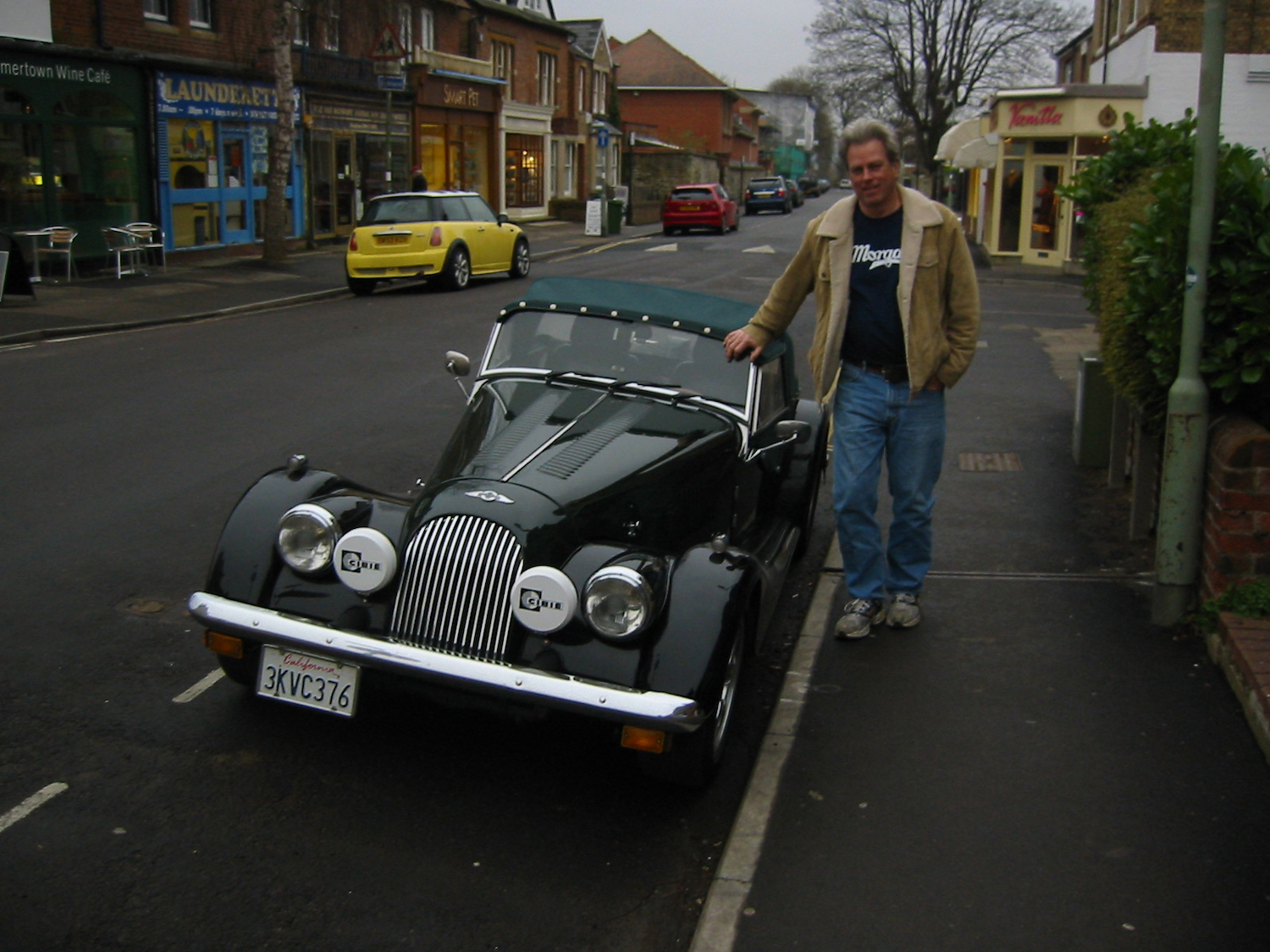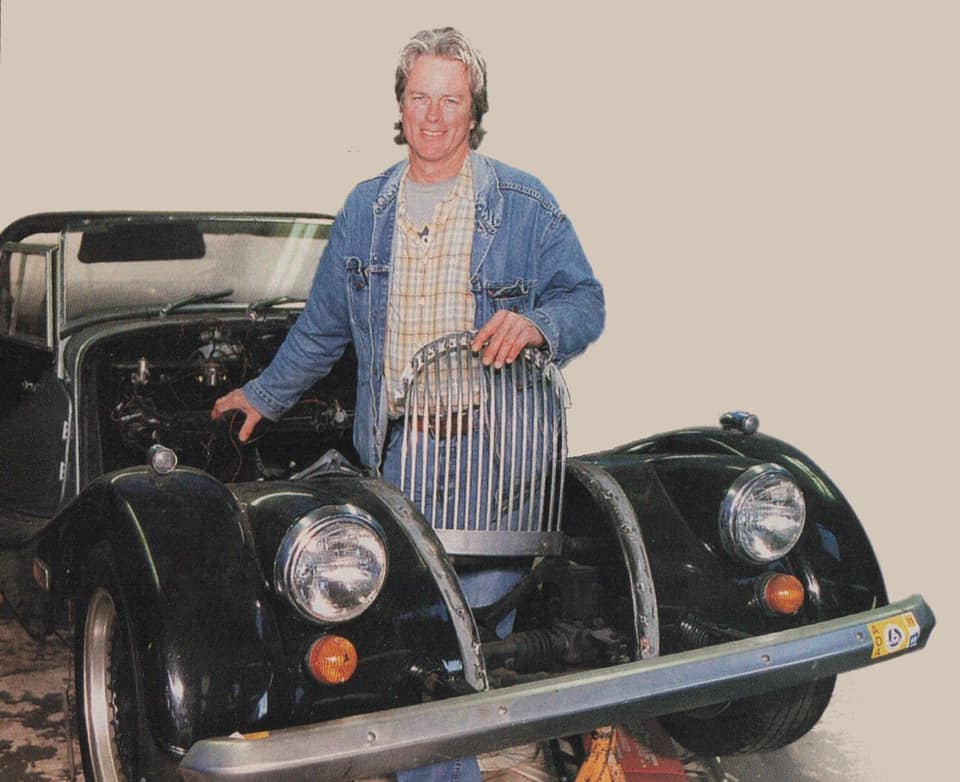Media | Articles
Bill Fink, savior of Morgan in the U.S., passes away in tragic house fire
Bill Fink, 77, widely regarded as the man responsible for keeping Morgan sports cars alive in the U.S. in the 1970s and beyond, died Sunday when his home in Bodega, California, caught fire. According to SFGate.com, the Sonoma County Sheriff’s office says that Fink’s wife and two friends managed to escape, but that the blaze’s flames and heat kept firefighters from being able to access the single-family home, with Fink still inside.
Fink, a former student at Yale and rower at Oxford University, started his adventure in British sports cars in the late 1960s when he began converting the original V-8-powered 1968 Morgan Plus 8 to left-hand-drive and importing them into the U.S. for sale—all while still in school at Oxford. Eventually he went back home to San Francisco, where he set up a proper dealership to import used Plus 8s and other Morgans like the +4 and 4/4. (The dealership, Isis Imports, recently changed its name to Morgan Cars USA to avoid unsavory associations with the terror organization in the Middle East.) When Fink’s efforts to have Morgans exempt from safety and emissions regulations ran out of runway in 1971, he made it his mission to pass EPA and NHTSA rules, famously doing so by converting the Rover/Buick V-8 in the Plus 8 to run on propane.
Working directly with company chief Peter Morgan starting in 1973, Fink also made a go at importing new cars. Red tape meant the first new Morgan sales in the U.S. at Isis Imports couldn’t begin until 1976 and not without considerable modification at Morgan’s Malvern, UK, factory. Here’s the rundown, courtesy of Morgan: First and Last of The Real Sports Cars, by Gregory Houston Bowden:
Fink’s cars have telescopic gas-filled rear shock absorbers, inertia-reel seat belts, four-seater size windscreens and a special steel hoop bolted to the chassis behind the dashboard. On arrival in California, Bill fits steel beams into the doors to comply with the side impact regulations and bolts them on to the steel hoop. Holes have to be cut in the wings to accommodate the 5-mph impact bumpers and modifications to the fuel tank, fillers, carburettor, fuel lines, fuel gauge and distributor are all required to enable the [Plus 8] to run on propane. Probably the worst part of Bill’s work is compiling the necessary 45-page dossier detailing and showing pictures of the modifications on each individual car. What has given him the determination to do all this? Well, you don’t get to row in the Oxford University boat race crew if you are someone who gives in easily.
Marketplace
Buy and sell classics with confidence
20180809203838)
Later, following Land Rover-engined Plus 8s in the early 1990s, along with a Ford-engined V-6 Roadster and the BMW-powered Aero 8, Fink got creative once more. In 2005 he and his team installed a Corvette V-8 into a Morgan Roadster. “I have a certain bias,” he told British auto journalist Andrew English in a 2018 Telegraph piece, “but I like the smaller body of the Roadster, it’s much narrower than the current cars. We built a Corvette-engined version of the current Roadster for the Morgan agent in Stuttgart about 10 years ago. There was a bit of work to do around the firewall, but it went in fine. The GM engine has the same basic dimensions as the Buick engine.”
Extremely active in the Morgan community both in North America and in Europe, Fink was beloved and respected. He participated in the Morgan Sports Car Club of Northern California since the 1960s, and his undisputed expertise in parts and restoration has kept many Morgans on the road. He was also the “proud custodian,” according to Morgan Motor Company, of the first 1968 Plus 8 Prototype—known as OUY 200E—which he brought to Morgan’s Thrill on the Hill event in 2018 to celebrate 50 years of the Plus 8.
CEO of Morgan, Steve Morris, honored Fink on the company Facebook page: “I am deeply saddened to hear the news about Bill Fink. I can remember Bill as a consistent and prominent Morgan character throughout my 38 years at the Morgan Motor Company. His passion, commitment and dedication to Morgan embodies the spirit of the marque. He was a friend to many here at the factory and will be sorely missed.”
Andrew English shared his own recollection of Fink with Hagerty. “My main memory is of a man with endless patience to deal with journalists’ damn fool questions and in telling the same story again and again,” he said. “Yet when I met him on a beautiful day in Malvern in 2018 he was by turns charming and charmingly outspoken. We drank beer together in the sun and it was a peaceful and rather wonderful afternoon stood with this lovely man next to his lovely old car while he recalled other days with other Morgans.”
Fink lamented the demise of the Plus 8 in 2018, and now that Morgan only sells the 3 Wheeler in America, he was keen to get four-wheeled models back into this market now that the U.S. Department of Transportation finally issued guidelines for the 2015 Low Volume Motor Vehicles Act following a SEMA lawsuit.
Survived by his wife of 40 years Judy, stepdaughters Tcherek and Amelia Kamstra, grandchild Madison, and siblings Jim Fink and Patricia Drew. Fink will be remembered for his unwavering passion for British sports cars and the people that love them. When he first got approval to import new Morgans back in the 1970s as Isis Imports found its footing, Fink sent out a postcard to celebrate. “It’s high time that folks in these United States got back to some of the Truths about Serious Motoring. Like spirited performance, agile handling, simplicity. And function. A car should work, not just look like it does. The Morgan is Back!”
If Morgan does indeed make it back to America on four wheels, it’ll be in no small part due to the legacy Bill Fink left behind.

20200211161004)
20200211161035)
20200211161059)








